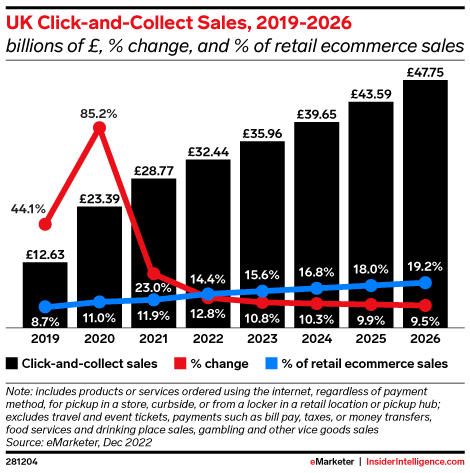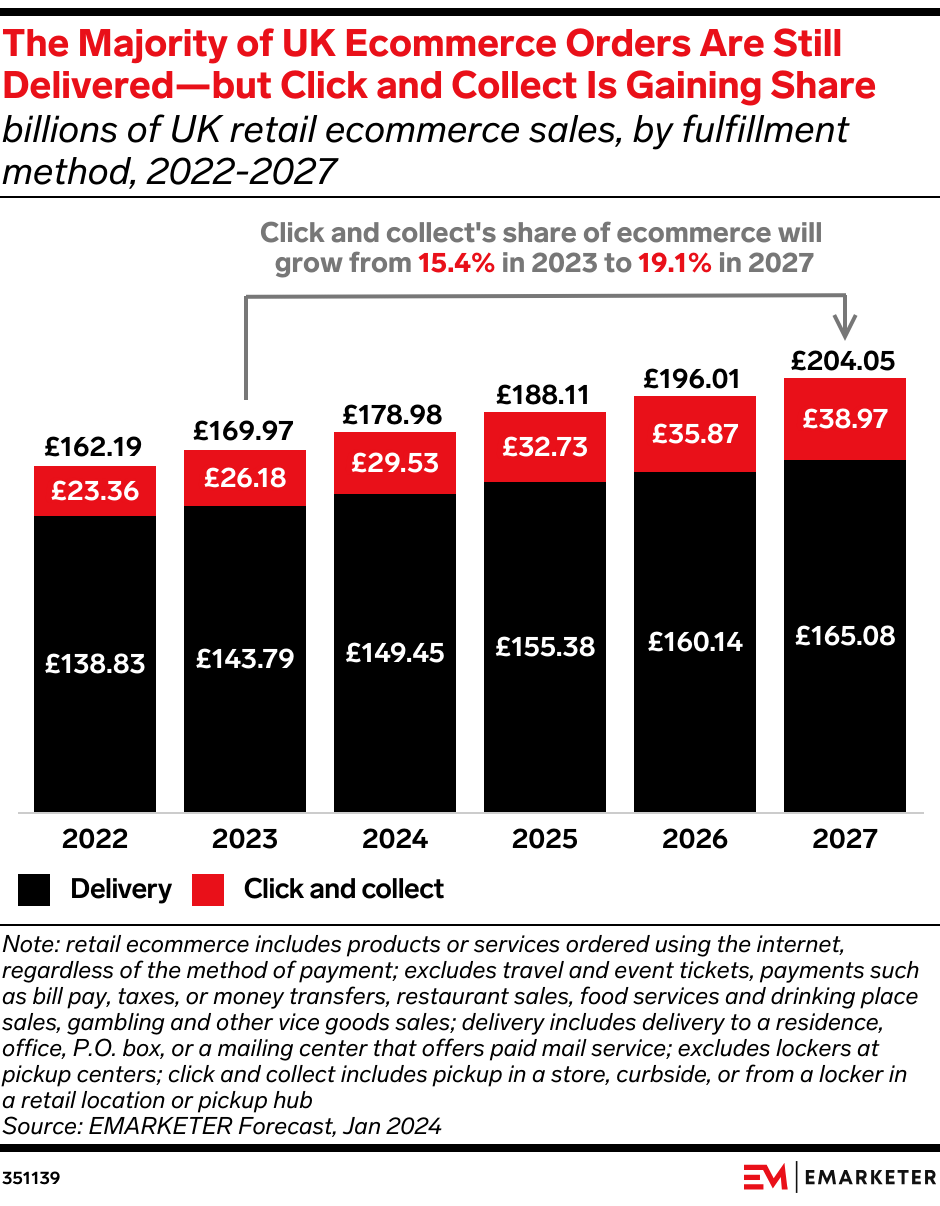In 2024, click-and-collect sales were projected to surpass $109 billion and the projections indicate that by 2026, click & collect sales are expected to reach $131 billion, making up 9.6% of total retail commerce sales alone in the USA cementing its role as a revenue powerhouse for retailers. Initially a lifeline during the pandemic, this service has evolved into a vital commerce fulfilment method, blending online and in-store experiences.
At a time, when B2B businesses are continuously looking for ways to streamline operations and meet customer expectations more effectively, click and collect has proven indispensable. It is an order fulfilment option that allows buyers to place orders online and pick them up at a designated location.
While this service has been well-established in the B2C world, many B2B retailers are still unfamiliar with how click and collect works and the strategic advantages it offers for improving operations.
What is click and collect in B2B?
Click & collect in a B2B environment operates similarly to its B2C counterpart but caters to the unique demands of B2B transactions. It allows business customers to place orders online or through procurement platforms and then collect their items from selected distribution centres, warehouses, or even retail locations.
| On another note, click and collect requires minimal resources to operate, making it an ideal solution for smaller businesses with limited staff and space for handling shipping logistics. |
The main distinction between B2B and B2C click & collect lies in the scale and complexity of orders. B2B orders often involve bulk purchases, specialised equipment, or materials needed for production, making precise delivery times and flexible pick-up locations even more critical. For instance, a construction company may use click & collect to source critical supplies, ensuring they can access products without delays.

Source of Image: eMarketer
Advantages of click & collect for B2B retailers
#1 Improved customer convenience
B2B customers value convenience and speed. Click & collect offers the flexibility to pick up items at their convenience, making it easier for them to receive urgent products without waiting for delivery. This flexibility helps companies keep their operations running smoothly, reducing downtime.
#2 Cost efficiency
One of the most immediate benefits of click & collect for B2B retailers is cost savings on logistics. By offering a pick-up option, retailers can reduce shipping costs, which is particularly beneficial for bulky or high-value goods. Customers, in turn, avoid paying expensive delivery fees, making it a win-win for both parties.
#3 Enhanced inventory management
Click & collect can be integrated with sophisticated inventory management systems, giving businesses real-time visibility into stock levels. For B2B retailers, this means that orders are fulfilled accurately, ensuring that the correct quantity and specifications of products are ready for collection. This integration prevents stockouts and reduces over-ordering, thus optimising overall inventory control.
#4 Reduced delivery delays:
In industries where time-sensitive deliveries are crucial, click & collect minimises the risk of delayed shipments. For example, if a manufacturer urgently needs replacement parts to prevent a production halt, being able to collect items from a nearby warehouse significantly reduces lead times, thus maintaining business continuity.








.png?h=250&fm=webp)
.png?h=250&fm=webp)
.png?h=250&fm=webp)



.png?h=250&fm=webp)
.png?h=250&fm=webp)
.png?h=250&fm=webp)


.png?h=250&fm=webp)



.png?h=250&fm=webp)
















.png?h=250&fm=webp)

.png?h=250&fm=webp)
.png?h=250&fm=webp)



































































































































.png?h=250&fm=webp)


.jpg?h=250&fm=webp)





 copy.png?h=250&fm=webp)























_ Why do you need one.png?h=250&fm=webp)


























































.jpg?h=250&fm=webp)

.png?h=250&fm=webp)



.png?h=250&fm=webp)

.jpg?h=250&fm=webp)




.png?h=250&fm=webp)









.jpg?h=250&fm=webp)
